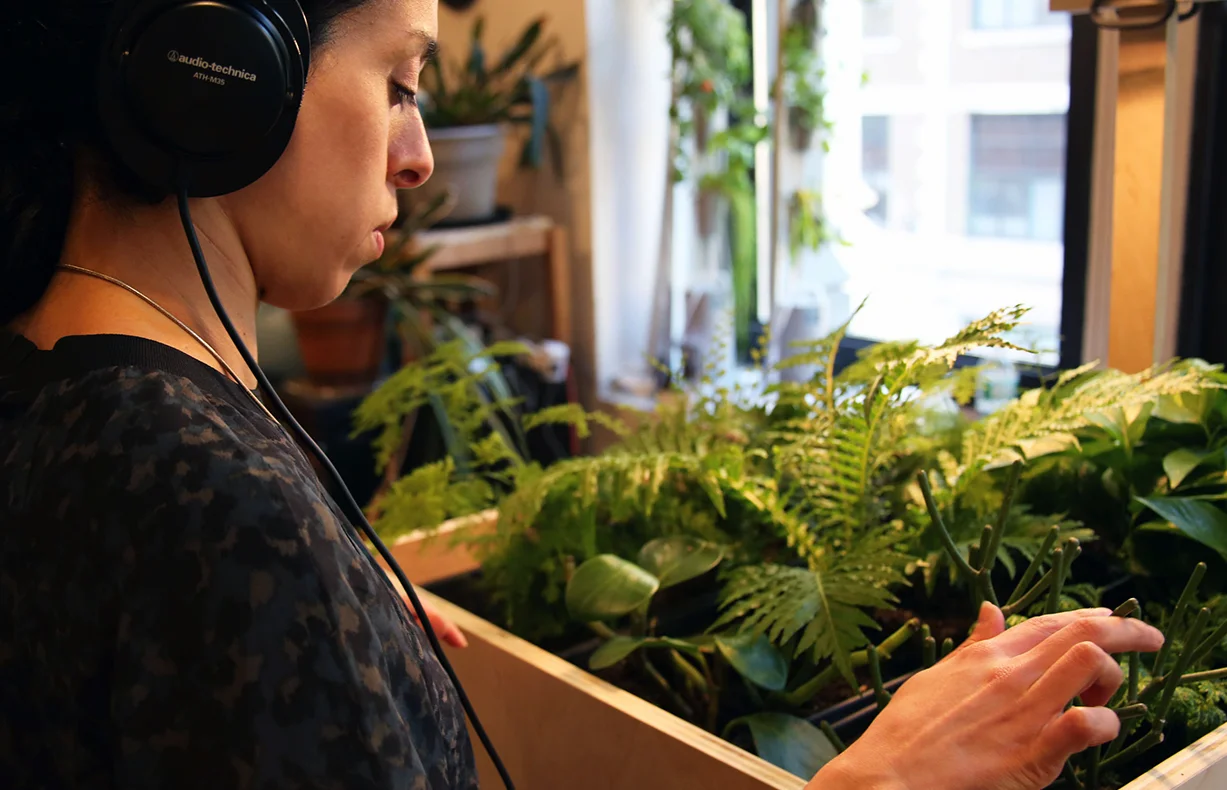
Root Note
A responsive sonic garden
Root Note
A responsive sonic GARDEN that brings to life the dynamic relationship between plants and their surroundings

Root Note is an interactive garden that allows users to manipulate generative sound compositions using data from living plants.
The project consists of a small garden of plants that reacts to the touch and proximity of a user. Three different kinds of sensors embedded in the soil register changes in the garden’s environment, such as the presence of human touch, fluctuations in light, and overall soil moisture level.
By observing and interacting with the piece, users take part in sculpting a real-time representation of the plants’ environment in the form of an immersive, data-based soundscape. Root Note encourages new modes of interaction and communication between plants and humans, asking people to stop and pay attention to everyday nature in a new way.
Role
Concept, Interaction Design, Physical Computing & Hardware, Fabrication
Collaborator
Nick Bratton
YEAR
2014 - 2015
CONCEPT
What if nature could be an interface for controlling sound? If plants could talk, what would they sound like? Inspired by many prior projects using plants and music, we came up with the idea to make an interactive sound installation in which the audience could make ambient music by touching and interacting with a garden of plants.
After some initial testing and prototyping, we decided to move forward with creating a touch and light-sensitive garden using capacitive touch sensors, photocells (light sensors) and a soil moisture sensor to control a more underlying, ambient sound. Using these sensors, a user would hear changes in the sound as they touched the plants or moved around the garden.
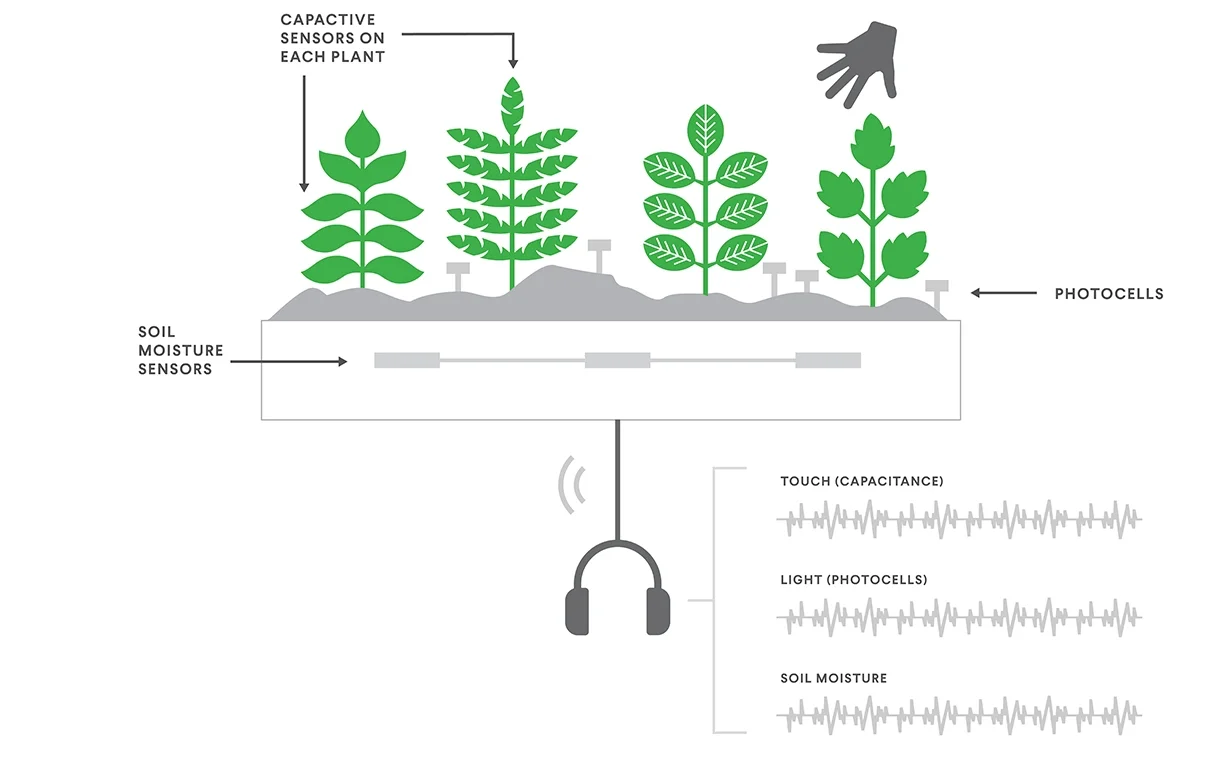
Process: Prototyping
In our first prototypes, we tested many different kinds of sensors, from homemade moisture sensors to DIY contact microphones. We needed to figure out what sensors would gave us a range of data we could use, and could be somehow influenced by human interaction or intervention, in order to make considered design choices.
We quickly discovered that many of the sensors weren’t viable for an installation context (i.e. pH was too consistent, changing moisture would quickly saturate the soil).

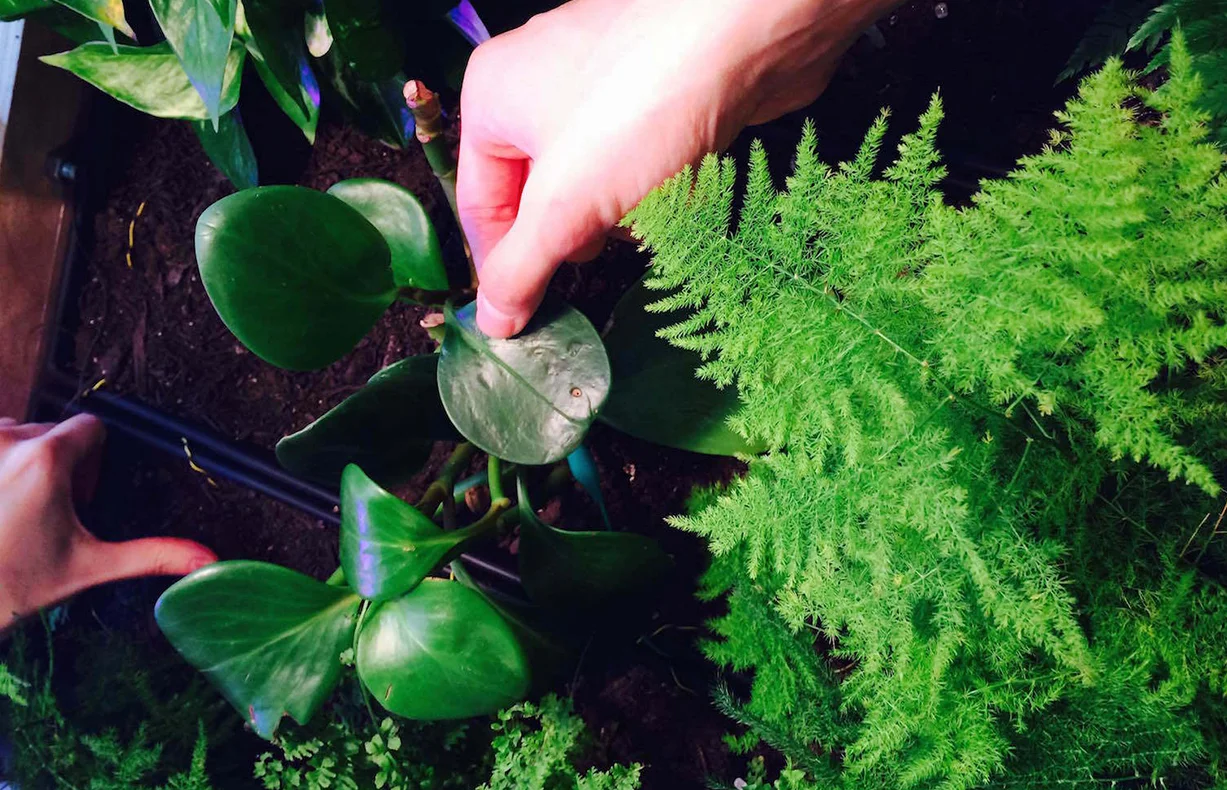
Given that we wanted the plants to be touch sensitive, we decided to explore capacitive touch sensing. Capacitive sensing is full of challenges, but after testing different circuits, we got it to perform in a stable way. Below you can see an early test where the data changes on the screen as I touch the plant.

Final Design and Fabrication
Root Note works by using three different kinds of sensors embedded in the soil that react to changes in human touch, light and moisture. Using an Arduino microcontroller, this live data from the plants is routed into the audio synthesis environment Max / MSP where it is used to control different aspects of a composed sound piece.

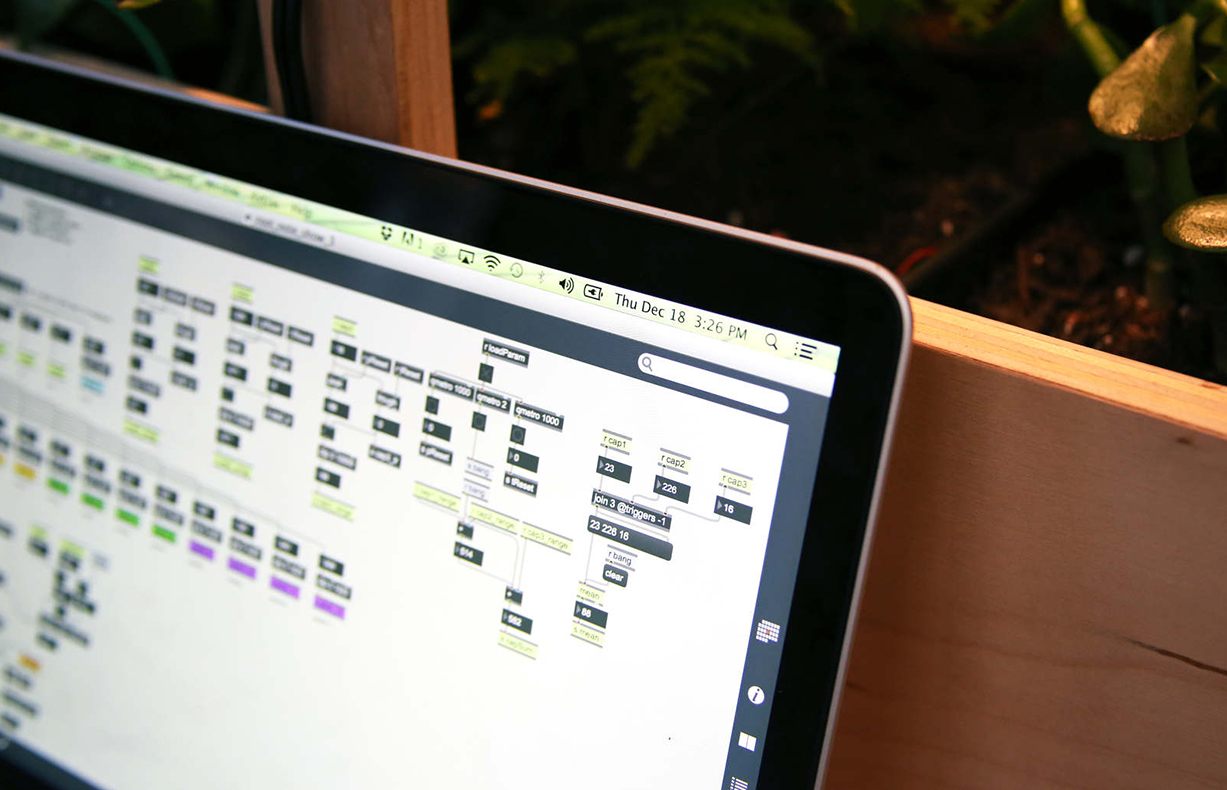
As Nick was composing the sound, we worked closely together to ensure that the audio was responsive enough to the sensor data coming in. We did many rounds of play testing to make sure that people felt the sound was reactive when they were touching the plants.

Root Note’s final form is a small garden box of plants that mimics a raised garden bed. Outfitted with a single pair of headphones, the piece is designed for one, to give viewers an intimate experience of the plants and the sound they are creating through their interaction.

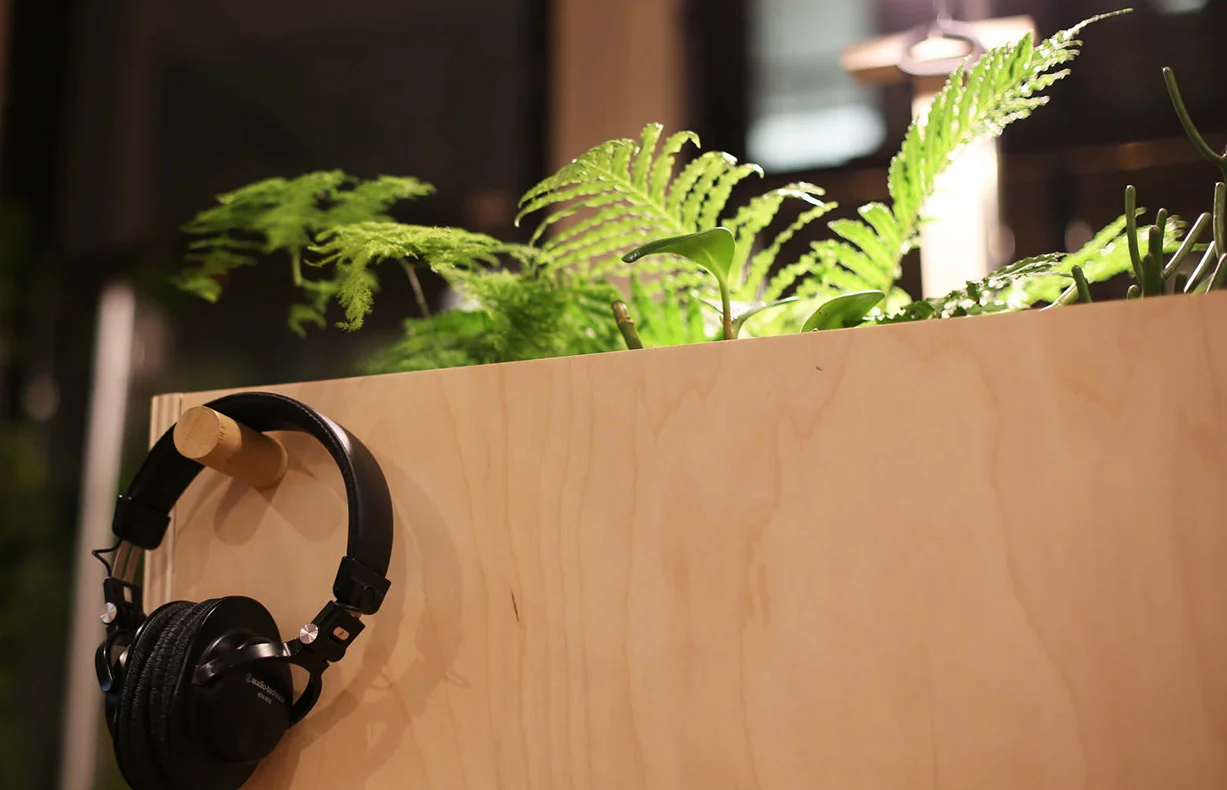
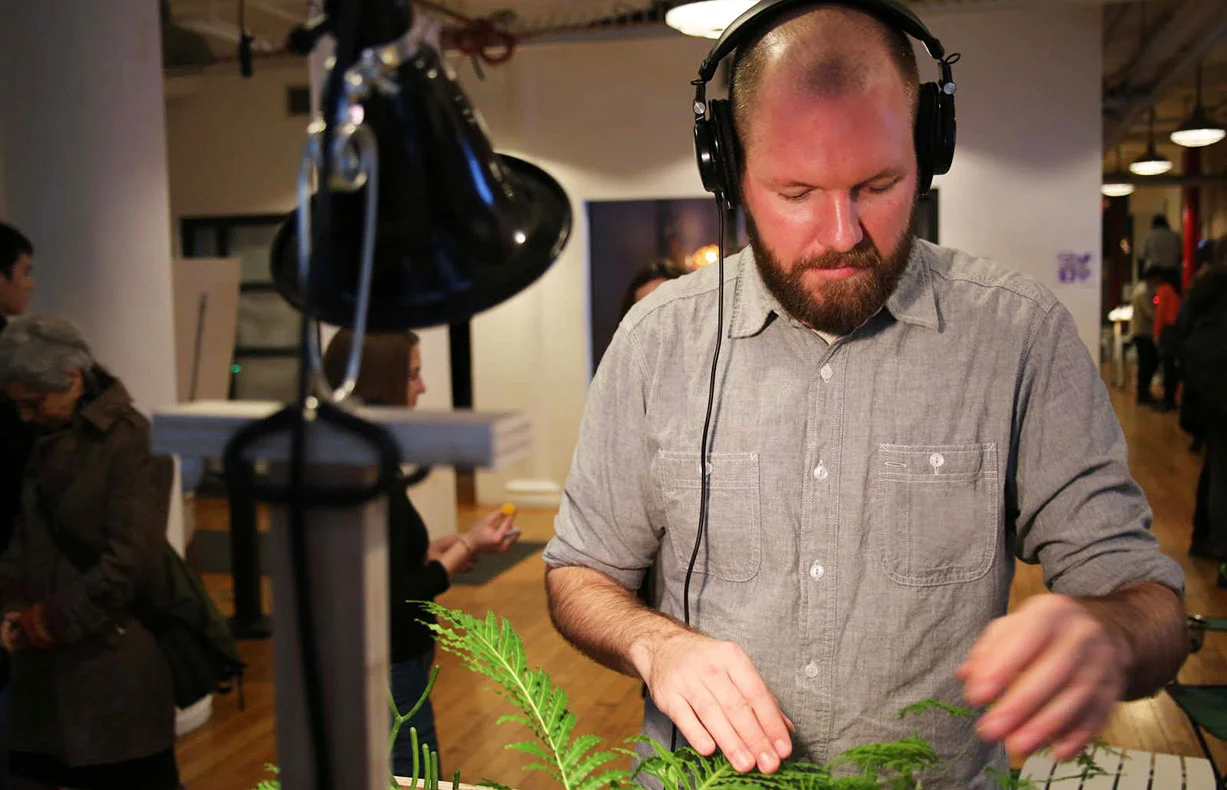

Awards and Press
In 2015, Root Note was shown at Red Bull Studios New York as part of Powrplnt exhibition and program. In addition to exhibiting our piece, we taught a two-part course on plant sensing and sonification using Arduino and MaxMSP to high school students from City As School and collaboratively produced a large-scale sonic garden.
The Fader
Red Bull Studios New York
Good Magazine
Role
Concept, Interaction Design, Physical Computing & Hardware, Fabrication
Collaborator
Nick Bratton
YEAR
2014 - 2015
Tools & Technologies
Arduino
Capacitive Touch Sensing
Max / MSP